Blade Runner
8.5 /10 16 Votes
91% Rotten Tomatoes 88% Metacritic Genre Sci-Fi, Thriller Duration Language English | 8.2/10 IMDb 3/4 Roger Ebert Sequel Blade Runner 2 Country United States | |||||||||||||||||||||||||||||||||
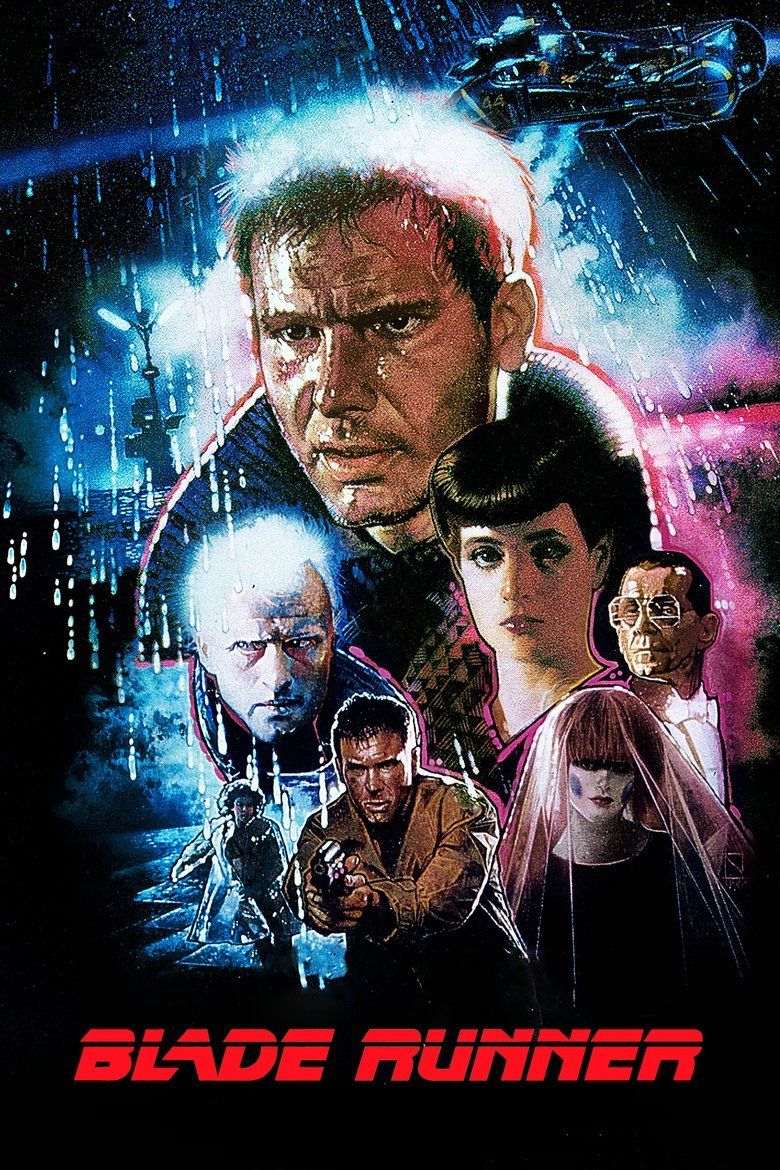 | ||||||||||||||||||||||||||||||||||
Release date June 25, 1982 (1982-06-25) Adapted from Do Androids Dream of Electric Sheep? Cast (Rick Deckard), (Roy Batty), (Rachael), (Gaff), (Pris), (J.F. Sebastian) Similar movies Terminator Genisys , Interstellar , , Terminator Salvation , Terminator 3: Rise of the Machines , The Terminator Tagline Man has made his match... now it's his problem. | ||||||||||||||||||||||||||||||||||
Blade runner 1982 official trailer ridley scott harrison ford movie
Blade Runner is a 1982 American neo-noir science fiction film directed by Ridley Scott and starring Harrison Ford, Rutger Hauer, Sean Young, and Edward James Olmos. Written by Hampton Fancher and David Peoples, the film is a loose adaptation of the 1968 novel Do Androids Dream of Electric Sheep? by Philip K. Dick. It depicts a dystopian Los Angeles of 2019 in which genetically engineered replicants, which are visually indistinguishable from adult humans, are manufactured by the powerful Tyrell Corporation to work on off-world colonies. Those that escape and return to Earth are hunted down and "retired" by special police operatives known as Blade Runners. The story focuses on burnt-out expert Blade Runner Rick Deckard (Ford), who reluctantly agrees to take on one more assignment to hunt down a group of recently escaped replicants led by Roy Batty (Hauer). During his investigations, Deckard meets Rachael (Young), an advanced replicant who causes him to question his attitude towards replicants.
Contents
- Blade runner 1982 official trailer ridley scott harrison ford movie
- Blade runner 1 10 movie clip she s a replicant 1982 hd
- Plot
- Themes
- Casting
- Development
- Design
- Voight Kampff machine
- Music
- Special effects
- Release
- Critical reception
- Accolades
- Versions
- Cultural impact
- American Film Institute recognition
- In other media
- Documentaries
- Sequel
- Books
- Blade runner 3 10 movie clip retiring zhora 1982 hd
- References
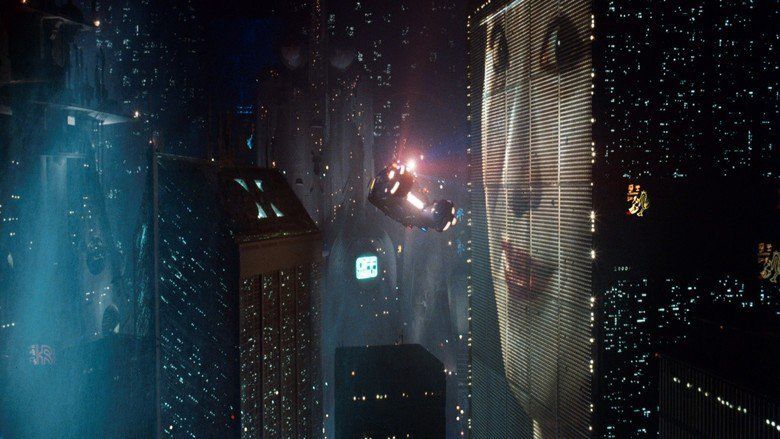
Blade Runner initially polarized critics; some were displeased with the pacing, while others praised its thematic complexity and visuals. It underperformed in North American theaters, but has since become a cult film. The year following its release, the film won the prestigious Hugo Award for Best Dramatic Presentation. Hailed for its production design, depicting a "retrofitted" future, it remains a leading example of neo-noir cinema. The film's soundtrack, composed by Vangelis, was critically acclaimed and nominated in 1983 for a BAFTA and Golden Globe as best original score. The film brought the work of Philip K. Dick to the attention of Hollywood, and several later films were based on his work. Ridley Scott regards Blade Runner as "probably" his most complete and personal film. In 1993, the movie was selected for preservation in the United States National Film Registry by the Library of Congress, being deemed "culturally, historically, or aesthetically significant". Blade Runner is now regarded by many critics as one of the all-Time best science fiction movies.
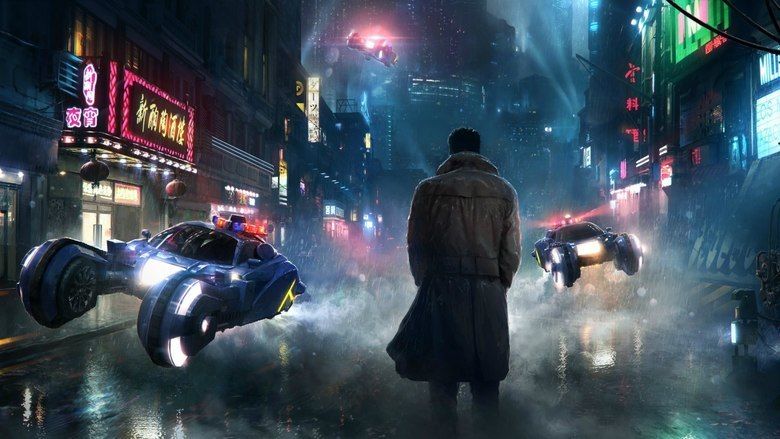
Seven versions of the film have been shown for various markets as a result of controversial changes made by studio executives. A director's cut was released in 1992 after a strong response to Test screenings of a workprint. This, in conjunction with its popularity as a video rental, made it one of the first movies released on DVD, a basic production with mediocre video and audio quality. In 2007, Warner Bros. released The Final Cut, a 25th anniversary digitally remastered version, the only one on which Scott had complete artistic freedom. This version was shown in selected theaters and subsequently released on DVD, HD DVD, and Blu-ray. A sequel, Blade Runner 2049, is scheduled for release in October 2017.
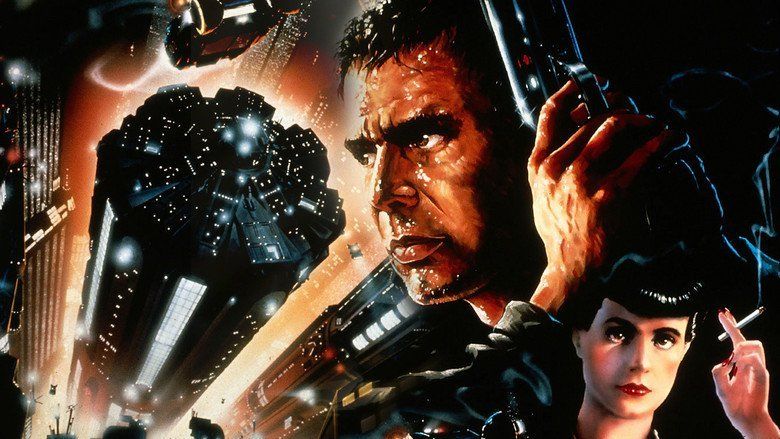
Blade runner 1 10 movie clip she s a replicant 1982 hd
Plot

In Los Angeles in November 2019, ex-police officer Rick Deckard is detained by officer Gaff and brought to his former supervisor, Bryant. Deckard, whose job as a "Blade Runner" was to track down bioengineered beings known as replicants and "retire" (a euphemism for killing) them, is informed that four have come to Earth illegally. As Tyrell Corporation Nexus-6 models, they have only a four-year lifespan and may have come to Earth to try to extend their lives.
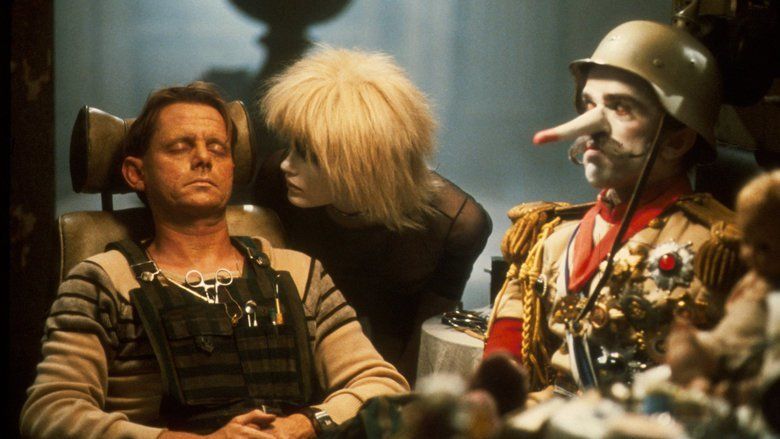
Deckard watches a video of a Blade Runner named Holden administering the "Voight-Kampff" test designed to distinguish replicants from humans based on their emotional response to questions. The test subject, Leon, shoots Holden after Holden asks about Leon's mother. Bryant wants Deckard to retire Leon and the other three replicants: Roy Batty, Zhora, and Pris. Deckard initially refuses, but after Bryant ambiguously threatens him, he reluctantly agrees.
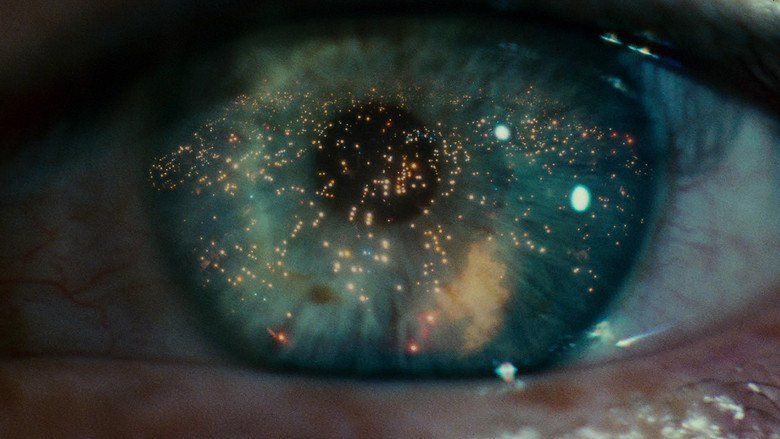
Deckard begins his investigation at the Tyrell Corporation to ensure that the test works on Nexus-6 models. While there, he discovers that Eldon Tyrell's assistant Rachael is an experimental replicant who believes herself to be human. Rachael has been given false memories to provide an "emotional cushion". As a result, a more extensive test is required to determine whether she is a replicant.
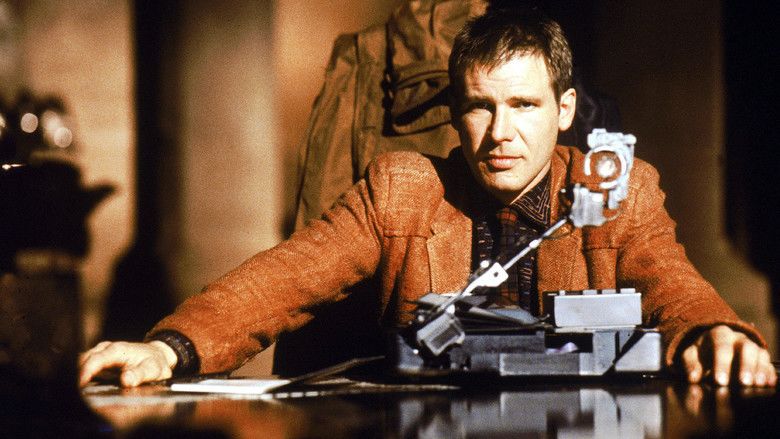
Events are then set into motion that pit Deckard's search for the replicants against their search for Tyrell to force him to extend their lives. Roy and Leon investigate a replicant eye-manufacturing laboratory and learn of J. F. Sebastian, a gifted genetic designer who works closely with Tyrell. Rachael visits Deckard at his apartment to prove her humanity by showing him a family photo, but after Deckard reveals that her memories are implants from Tyrell's niece, she leaves his apartment in tears. Meanwhile, Pris locates Sebastian and manipulates him to gain his trust.
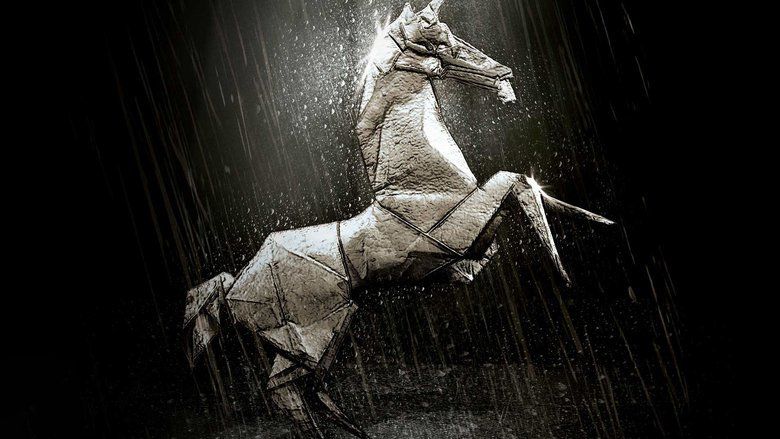
While searching Leon's hotel room, Deckard finds a photo of Zhora and a synthetic snake scale that leads him to a strip club where Zhora works. Deckard kills Zhora and shortly after is told by Bryant to also retire Rachael, who has disappeared from the Tyrell Corporation. After Deckard spots Rachael in a crowd, he is attacked by Leon, but Rachael kills Leon using Deckard's dropped pistol. The two return to Deckard's apartment, and during an intimate discussion, he promises not to hunt her; as she abruptly tries to leave, Deckard physically restrains her, forcing her to kiss him.
Arriving at Sebastian's apartment, Roy tells Pris the others are dead. Sympathetic to their plight, Sebastian reveals that because of "Methuselah Syndrome", a genetic premature aging disorder, his life will also be cut short. Sebastian and Roy gain entrance into Tyrell's secure penthouse, where Roy demands more life from his maker. Tyrell tells him that it is impossible. Roy confesses that he has done "questionable things" which Tyrell dismisses, praising Roy's advanced design and accomplishments in his short life. Roy kisses Tyrell, then kills him. Sebastian runs for the elevator followed by Roy, who then rides the elevator down alone. Though not shown, it is implied by Bryant via police radio that Roy also kills Sebastian.
Upon entering Sebastian's apartment, Deckard is ambushed by Pris, but he manages to kill her just as Roy returns. As Roy starts to die, he chases Deckard through the building, ending up on the roof. Deckard tries to jump to an adjacent roof, but misses and is left hanging precariously between buildings. Roy makes the jump with ease, and as Deckard's grip loosens, Roy hoists him onto the roof, saving him. As Roy's life runs out, he delivers a monologue about how his memories "will be lost in time, like tears in rain"; Roy dies in front of Deckard, who watches silently. Gaff arrives and shouts across to Deckard, "It's too bad she won't live, but then again, who does?" Deckard returns to his apartment and finds the door ajar, but Rachael is safe, asleep in his bed. As they leave, Deckard notices a small tin-foil origami unicorn on the floor, a familiar calling card that brings back to him Gaff's final words. Deckard and Rachael quickly leave the apartment block.
Themes
The film operates on multiple dramatic and narrative levels. It follows some conventions of film noir, among them the character of a femme fatale; narration by the protagonist, at least in the original release; chiaroscuro cinematography; and giving the hero a questionable moral outlook extended to include reflections upon the nature of his own humanity. It is a literate science fiction film, thematically enfolding the philosophy of religion and moral implications of human mastery of genetic engineering in the context of classical Greek drama and hubris. It also draws on Biblical images, such as Noah's flood, and literary sources, such as Frankenstein. Linguistically, the theme of mortality is subtly reiterated in the chess game between Sebastian and Tyrell, based on the famous Immortal Game of 1851, though Scott has said that was coincidental.
Blade Runner delves into the implications of technology on the environment and on society by reaching to the past, using literature, religious symbolism, classical dramatic themes, and film noir. This tension between past, present, and future is mirrored in the retrofitted future of Blade Runner, which is high-tech and gleaming in places but decayed and old elsewhere. Ridley Scott described the film as: "extremely dark, both literally and metaphorically, with an oddly masochistic feel", in an interview by Lynn Barber for the British Sunday newspaper The Observer in 2002. Scott "liked the idea of exploring pain" in the wake of his brother's skin cancer death: "When he was ill, I used to go and visit him in London, and that was really traumatic for me."
An aura of paranoia suffuses the film: corporate power looms large; the police seem omnipresent; vehicle and warning lights probe into buildings; and the consequences of huge biomedical power over the individual are explored especially the consequences for replicants of their implanted memories. Control over the environment is depicted as taking place on a vast scale, hand in hand with the absence of any natural life, with artificial animals substituting for their extinct predecessors. This oppressive backdrop explains the frequently referenced migration of humans to extraterrestrial ("off-world") colonies. The dystopian themes explored in Blade Runner are an early example of cyberpunk concepts expanding into film. Eyes are a recurring motif, as are manipulated images, calling reality into question, and our ability to accurately perceive and remember it.
These thematic elements provide an atmosphere of uncertainty for Blade Runner's central theme of examining humanity. In order to discover replicants, an empathy test is used, with a number of its questions focused on the treatment of animals seemingly an essential indicator of someone's "humanity". The replicants appear to show compassion and concern for one another and are juxtaposed against human characters who lack empathy while the mass of humanity on the streets is cold and impersonal. The film goes so far as to put in doubt whether Deckard is human, and forces the audience to re-evaluate what it means to be human.
The question of whether Deckard is intended to be a human or a replicant has been an ongoing controversy since the film's release. Both Michael Deeley and Harrison Ford wanted Deckard to be human while Hampton Fancher preferred ambiguity. Ridley Scott has confirmed that in his vision Deckard is a replicant.
Deckard's unicorn dream sequence, inserted into the Director's Cut, coinciding with Gaff's parting gift of an origami unicorn is seen by many as showing that Deckard is a replicant as Gaff could have accessed Deckard's implanted memories. The interpretation that Deckard is a replicant is challenged by others who believe the unicorn imagery shows that the characters, whether human or replicant, share the same dreams and recognize their affinity, or that the absence of a decisive answer is crucial to the film's main theme. The inherent ambiguity and uncertainty of the film, as well as its textual richness, have permitted viewers to see it from their own perspectives.
Casting
Casting the film proved troublesome, particularly for the lead role of Deckard. Screenwriter Hampton Fancher envisioned Robert Mitchum as Deckard and wrote the character's dialogue with Mitchum in mind. Director Ridley Scott and the film's producers spent months meeting and discussing the role with Dustin Hoffman, who eventually departed over differences in vision. Harrison Ford was ultimately chosen for several reasons, including his performance in the Star Wars films, Ford's interest in the Blade Runner story, and discussions with Steven Spielberg who was finishing Raiders of the Lost Ark at the time and strongly praised Ford's work in the film. Following his success in films like Star Wars (1977) and Raiders of the Lost Ark (1981), Ford was looking for a role with dramatic depth. According to production documents, several actors were considered for the role, including Gene Hackman, Sean Connery, Jack Nicholson, Paul Newman, Clint Eastwood, Tommy Lee Jones, Arnold Schwarzenegger, Al Pacino, and Burt Reynolds.
One role that was not difficult to cast was Rutger Hauer as Roy Batty, the violent yet thoughtful leader of the replicants. Scott cast Hauer without having met him, based solely on Hauer's performances in Paul Verhoeven's movies Scott had seen (Katie Tippel, Soldier of Orange and Turkish Delight). Hauer's portrayal of Batty was regarded by Philip K. Dick as, "the perfect Batty cold, Aryan, flawless". Of the many films Hauer has made, Blade Runner is his favorite. As he explained in a live chat in 2001, "Blade Runner needs no explanation. It just [is]. All of the best. There is nothing like it. To be part of a real masterpiece which changed the world's thinking. It's awesome." Hauer rewrote his character's "tears in rain" speech himself and presented the words to Scott on set prior to filming.
Blade Runner used a number of then-lesser-known actors: Sean Young portrays Rachael, an experimental replicant implanted with the memories of Tyrell's niece, causing her to believe she is human; Nina Axelrod auditioned for the role. Daryl Hannah portrays Pris, a "basic pleasure model" replicant; Stacey Nelkin auditioned for the role, but was given another part in the film, which was ultimately cut before filming. Casting Pris and Rachael was challenging, requiring several screen tests, with Morgan Paull playing the role of Deckard. Paull was cast as Deckard's fellow bounty hunter Holden based on his performances in the tests. Brion James portrays Leon Kowalski, a combat replicant, and Joanna Cassidy portrays Zhora, an assassin replicant.
Edward James Olmos portrays Gaff. Olmos used his diverse ethnic background, and personal research, to help create the fictional "Cityspeak" language his character uses in the film. His initial address to Deckard at the noodle bar is partly in Hungarian and means, "Horse dick [bullshit]! No way. You are the Blade ... Blade Runner." M. Emmet Walsh plays Captain Bryant, a hard-drinking, sleazy, and underhanded police veteran typical of the film noir genre. Joe Turkel portrays Dr. Eldon Tyrell, a corporate mogul who built an Empire on genetically manipulated humanoid slaves. William Sanderson was cast as J. F. Sebastian, a quiet and lonely genius who provides a compassionate yet compliant portrait of humanity. J. F. sympathizes with the replicants, whom he sees as companions, and shares their shorter lifespan due to his rapid aging disease; Joe Pantoliano was considered for the role. James Hong portrays Hannibal Chew, an elderly geneticist specializing in synthetic eyes, and Hy Pyke portrays the sleazy bar owner Taffey Lewis with ease and in a single take, something almost unheard-of with Scott whose drive for perfection resulted at times in double-digit takes.
Development
Interest in adapting Philip K. Dick's novel Do Androids Dream of Electric Sheep? developed shortly after its 1968 publication. Director Martin Scorsese was interested in filming the novel, but never optioned it. Producer Herb Jaffe optioned it in the early 1970s, but Dick was unimpressed with the screenplay written by Herb's son Robert: "Jaffe's screenplay was so terribly done ... Robert flew down to Santa Ana to speak with me about the project. And the first thing I said to him when he got off the plane was, 'Shall I beat you up here at the airport, or shall I beat you up back at my apartment?'"
The screenplay by Hampton Fancher was optioned in 1977. Producer Michael Deeley became interested in Fancher's draft and convinced director Ridley Scott to film it. Scott had previously declined the project, but after leaving the slow production of Dune, wanted a faster-paced project to take his mind off his older brother's recent death. He joined the project on February 21, 1980, and managed to push up the promised Filmways financing from US$13 million to $15 million. Fancher's script focused more on environmental issues and less on issues of humanity and religion, which are prominent in the novel and Scott wanted changes. Fancher found a cinema treatment by William S. Burroughs for Alan E. Nourse's novel The Bladerunner (1974), titled Blade Runner (a movie). Scott liked the name, so Deeley obtained the rights to the titles. Eventually he hired David Peoples to rewrite the script and Fancher left the job over the issue on December 21, 1980, although he later returned to contribute additional rewrites.
Having invested over $2.5 million in pre-production, as the date of commencement of principal photography neared, Filmways withdrew financial backing. In ten days Deeley had secured $21.5 million in financing through a three-way deal between The Ladd Company (through Warner Bros.), the Hong Kong-based producer Sir Run Run Shaw and Tandem Productions.
Philip K. Dick became concerned that no one had informed him about the film's production, which added to his distrust of Hollywood. After Dick criticized an early version of Hampton Fancher's script in an article written for the Los Angeles Select TV Guide, the studio sent Dick the David Peoples rewrite. Although Dick died shortly before the film's release, he was pleased with the rewritten script and with a 20-minute special effects test reel that was screened for him when he was invited to the studio. Despite his well-known skepticism of Hollywood in principle, Dick enthused to Ridley Scott that the world created for the film looked exactly as he had imagined it. He said, "I saw a segment of Douglas Trumbull's special effects for Blade Runner on the KNBC-TV news. I recognized it immediately. It was my own interior world. They caught it perfectly." He also approved of the film's script, saying, "After I finished reading the screenplay, I got the novel out and looked through it. The two reinforce each other, so that someone who started with the novel would enjoy the movie and someone who started with the movie would enjoy the novel." The motion picture was dedicated to Dick. Principal photography of Blade Runner began on March 9, 1981, and ended four months later.
In 1992, Ford revealed, "Blade Runner is not one of my favorite films. I tangled with Ridley." Apart from friction with the director, Ford also disliked the voiceovers: "When we started shooting it had been tacitly agreed that the version of the film that we had agreed upon was the version without voiceover narration. It was a f**king [sic] nightmare. I thought that the film had worked without the narration. But now I was stuck re-creating that narration. And I was obliged to do the voiceovers for people that did not represent the director's interests." "I went kicking and screaming to the studio to record it." The narration monologues were written by an uncredited Roland Kibbee.
In 2006, Scott was asked "Who's the biggest pain in the arse you've ever worked with?", he replied: "It's got to be Harrison ... he'll forgive me because now I get on with him. Now he's become charming. But he knows a lot, that's the problem. When we worked together it was my first film up and I was the new kid on the block. But we made a good movie." Ford said of Scott in 2000: "I admire his work. We had a bad patch there, and I'm over it." In 2006 Ford reflected on the production of the film saying: "What I remember more than anything else when I see Blade Runner is not the 50 nights of shooting in the rain, but the voiceover ... I was still obliged to work for these clowns that came in writing one bad voiceover after another." Ridley Scott confirmed in the summer 2007 issue of Total Film that Harrison Ford contributed to the Blade Runner Special Edition DVD, and had already recorded his interviews. "Harrison's fully on board", said Scott.
The Bradbury Building in downtown Los Angeles served as a filming location, and a Warner Bros. backlot housed the LA 2019 streets. Other locations included the Ennis-Brown House and the 2nd Street Tunnel. Test screenings resulted in several changes including adding a voice-over, a happy ending and the removal of a Holden hospital scene. The relationship between the filmmakers and the investors was difficult, which culminated in Deeley and Scott being fired but still working on the film. Crew members created T-shirts during filming saying, "Yes Guv'nor, My Ass" that mocked Scott's unfavorable comparison of U.S. and British crews; Scott responded with a T-shirt of his own, "Xenophobia Sucks" making the incident known as the T-shirt war.
Design
Ridley Scott credits Edward Hopper's painting Nighthawks and the French science fiction comics magazine Mtal Hurlant, to which the artist Moebius contributed, as stylistic mood sources. He also drew on the landscape of "Hong Kong on a very bad day" and the industrial landscape of his one-time home in northeast England. The visual style of the movie is influenced by the work of futurist Italian architect Antonio Sant'Elia. Scott hired Syd Mead as his concept artist who, like Scott, was influenced by Mtal Hurlant. Moebius was offered the opportunity to assist in the pre-production of Blade Runner, but he declined so that he could work on Ren Laloux's animated film Les Matres du temps a decision that he later regretted. Production designer Lawrence G. Paull and art director David Snyder realized Scott's and Mead's sketches. Douglas Trumbull and Richard Yuricich supervised the special effects for the film.
Blade Runner has numerous deep similarities to Fritz Lang's Metropolis, including a built-up urban environment, in which the wealthy literally live above the workers, dominated by a huge building the Stadtkrone Tower in Metropolis and the Tyrell Building in Blade Runner. Special effects supervisor David Dryer used stills from Metropolis when lining up Blade Runner's miniature building shots.
The extended end scene in the original theatrical release shows Rachael and Deckard traveling into daylight with pastoral aerial shots filmed by director Stanley Kubrick. Ridley Scott contacted Kubrick about using some of his surplus helicopter aerial photography from The Shining.
"Spinner" is the generic term for the fictional flying cars used in the film. A spinner can be driven as a ground-based vehicle, and take off vertically, hover, and cruise using jet propulsion much like vertical take-off and landing (VTOL) aircraft. They are used extensively by the police to patrol and survey the population, and it is clear that despite restrictions wealthy people can acquire spinner licenses. The vehicle was conceived and designed by Syd Mead who described the spinner as an "aerodyne" a vehicle which directs air downward to create lift, though press kits for the film stated that the spinner was propelled by three engines: "conventional internal combustion, jet, and anti-gravity" Mead's conceptual drawings were transformed into 25 working vehicles by automobile customizer Gene Winfield. A spinner is on permanent exhibit at the Science Fiction Museum and Hall of Fame in Seattle, Washington.
Voight-Kampff machine
The Voight-Kampff machine is a fictional interrogation tool, originating in the novel where it is spelled Voigt-Kampff. The Voight-Kampff is a polygraph-like machine used by Blade Runners to determine whether an individual is a replicant. It measures bodily functions such as respiration, blush response, heart rate and eye movement in response to questions dealing with empathy. In the film two replicants take the test, Leon and Rachael, and Deckard tells Tyrell that it usually takes 20 to 30 cross-referenced questions to distinguish a replicant; in contrast with the book, where it is stated it only takes "six or seven" questions to make a determination. In the film it takes more than one hundred questions to determine that Rachael is a replicant.
Music
The Blade Runner soundtrack by Vangelis is a dark melodic combination of classic composition and futuristic synthesizers which mirrors the film-noir retro-future envisioned by Ridley Scott. Vangelis, fresh from his Academy Award-winning score for Chariots of Fire, composed and performed the music on his synthesizers. He also made use of various chimes and the vocals of collaborator Demis Roussos. Another memorable sound is the haunting tenor sax solo "Love Theme" by British saxophonist Dick Morrissey, who performed on many of Vangelis's albums. Ridley Scott also used "Memories of Green" from the Vangelis album See You Later, an orchestral version of which Scott would later use in his film Someone to Watch Over Me.
Along with Vangelis' compositions and ambient textures, the film's soundscape also features a track by the Japanese ensemble Nipponia "Ogi No Mato" or "The Folding Fan as a Target" from the Nonesuch Records release Traditional Vocal and Instrumental Music and a track by harpist Gail Laughton from "Harps of the Ancient Temples" on Laurel Records.
Despite being well received by fans and critically acclaimed and nominated in 1983 for a BAFTA and Golden Globe as Best Original Score, and the promise of a soundtrack album from Polydor Records in the end titles of the film, the release of the official soundtrack recording was delayed for over a decade. There are two official releases of the music from Blade Runner. In light of the lack of a release of an album, the New American Orchestra recorded an orchestral adaptation in 1982 which bore little resemblance to the original. Some of the film tracks would, in 1989, surface on the compilation Vangelis: Themes, but not until the 1992 release of the Director's Cut version would a substantial amount of the film's score see commercial release.
These delays and poor reproductions led to the production of many bootleg recordings over the years. A bootleg tape surfaced in 1982 at science fiction conventions and became popular given the delay of an official release of the original recordings, and in 1993 "Off World Music, Ltd" created a bootleg CD that would prove more comprehensive than Vangelis' official CD in 1994. A set with three CDs of Blade Runner-related Vangelis music was released in 2007. Titled Blade Runner Trilogy, the first disc contains the same tracks as the 1994 official soundtrack release, the second features previously unreleased music from the movie, and the third disc is all newly composed music from Vangelis, inspired by, and in the spirit of the movie.
Special effects
The film's special effects are generally recognized to be among the best of all time, using the available (non-digital) technology to the fullest. In addition to matte paintings and models, the techniques employed included multipass exposures. In some scenes, the set was lit, shot, the film rewound, and then rerecorded over with different lighting. In some cases this was done 16 times in all. The cameras were frequently motion controlled using computers. Many effects used techniques which had been developed during the production of Close Encounters of the Third Kind.
Release
Blade Runner was released in 1,290 theaters on June 25, 1982. That date was chosen by producer Alan Ladd, Jr. because his previous highest-grossing films (Star Wars and Alien) had a similar opening date (May 25) in 1977 and 1979, making the date his "lucky day". Blade Runner grossed reasonably good ticket sales according to contemporary reports; earning $6.1 million during its first weekend in theaters. The film was released close to other major sci-fi/fantasy releases such as The Thing, Star Trek II: The Wrath of Khan, Conan the Barbarian and E.T. the Extra-Terrestrial.
Critical reception
Initial reactions among film critics were mixed. Some wrote that the plot took a back seat to the film's special effects, and did not fit the studio's marketing as an action/adventure movie. Others acclaimed its complexity and predicted it would stand the test of time. Negative criticism in the United States cited its slow pace. Sheila Benson from the Los Angeles Times called it "Blade Crawler", and Pat Berman in The State and Columbia Record described it as "science fiction pornography". Pauline Kael praised Blade Runner as worthy of a place in film history for its distinctive sci-fi vision, yet criticized the film's lack of development in "human terms".
Academics began writing analyses of the film almost as soon as it was released, in particular its dystopic aspects, its questions regarding "authentic" humanity, its ecofeminist aspects, in genre studies and in recent years, popular culture. The film has been the subject of academic interest over decades.
Since its original release, the film has become a science fiction classic. Roger Ebert praised the visuals of both the original and the Director's Cut versions and recommended it for that reason; however, he found the human story clichd and a little thin. He later added The Final Cut to his "Great Movies" list. Critic Chris Rodley and Janet Maslin theorized that Blade Runner changed cinematic and cultural discourse through its image repertoire, and subsequent influence on films. In 2012, Time film critic Richard Corliss surgically analyzed the durability, complexity, screenplay, sets and production dynamics from a personal, three-decade perspective. Blade Runner holds an 89% rating on Rotten Tomatoes, a website that rates films based on published reviews by critics, averaging a score of 8.5 out of 10 from 104 reviews. The site's main consensus reads "Misunderstood when it first hit theaters, the influence of Ridley Scott's mysterious, neo-noir Blade Runner has deepened with time. A visually remarkable, achingly human sci-fi masterpiece." Denis Villeneuve, who is to direct the Blade Runner sequel, cites the movie as a huge influence for him and many others.
Accolades
Blade Runner won or received nominations for the following awards:
Versions
Several versions of Blade Runner have been shown. The original workprint version (1982, 113 minutes) was shown for audience test previews in Denver and Dallas in March 1982. Negative responses to the previews led to the modifications resulting in the U.S. theatrical version. The workprint was shown as a director's cut without Scott's approval at the Los Angeles Fairfax Theater in May 1990, at an AMPAS showing in April 1991, and in September and October 1991 at the Los Angeles NuArt Theater and the San Francisco Castro Theatre. Positive responses pushed the studio to approve work on an official director's cut. A San Diego Sneak Preview was shown only once, in May 1982, and was almost identical to the U.S. theatrical version but contained three extra scenes not shown in any other version, including the 2007 Final Cut.
Two versions were shown in the film's 1982 theatrical release: the U.S. theatrical version (117 minutes), known as the original version or Domestic Cut, released on Betamax, CED Videodisc and VHS in 1983 and LaserDisc in 1987; and the International Cut (117 minutes), also known as the "Criterion Edition" or "uncut version", which included more violent action scenes than the U.S. version. Although initially unavailable in the U.S., and distributed in Europe and Asia via theatrical and local Warner Home Video Laserdisc releases, it was later released on VHS and Criterion Collection Laserdisc in North America, and re-released in 1992 as a "10th Anniversary Edition".
Scott's Director's Cut (1991, 116 minutes) was made available on VHS and Laserdisc in 1993, and on DVD in 1997. Significant changes from the theatrical version include: the removal of Deckard's voice-over; re-insertion of the unicorn sequence; and removal of the studio-imposed happy ending. Scott provided extensive notes and consultation to Warner Bros. through film preservationist Michael Arick, who was put in charge of creating the Director's Cut. Scott's The Final Cut (2007, 117 minutes) was released by Warner Bros. theatrically on October 5, 2007, and subsequently released on DVD, HD DVD, and Blu-ray Disc in December 2007. This is the only version over which Scott had complete editorial control.
Cultural impact
While not initially a success with North American audiences, the film was popular internationally and garnered a cult following. The film's dark style and futuristic designs have served as a benchmark and its influence can be seen in many subsequent science fiction films, video games, anime, and television programs. For example, Ronald D. Moore and David Eick, the producers of the re-imagining of Battlestar Galactica, have both cited Blade Runner as one of the major influences for the show. Blade Runner continues to reflect modern trends and concerns, and an increasing number consider it one of the greatest science fiction films of all time. It was voted the Best Science Fiction Film ever made in a poll of 60 eminent world scientists conducted in 2004. Blade Runner is also cited as an important influence to both the style and story of the Ghost in the Shell film series, which itself has been highly influential to the future-noir genre.
Blade Runner has been very influential to the cyberpunk movement. It also influenced the cyberpunk derivative biopunk that revolves around biotechnology and genetic engineering.
The film was selected for preservation in the United States National Film Registry in 1993 and is frequently used in university courses. In 2007 it was named the second-most visually influential film of all time by the Visual Effects Society.
Blade Runner is one of the most musically sampled films of the 20th century. The 2009 album, I, Human, by Singaporean band Deus Ex Machina makes numerous references to the genetic engineering and cloning themes from the film, and even features a track titled "Replicant".
Blade Runner has influenced adventure games such as the 2012 graphical text adventure Cypher, Rise of the Dragon, Snatcher, the Tex Murphy series, Beneath a Steel Sky, Flashback: The Quest for Identity, Bubblegum Crisis (and its original anime films), the role-playing game Shadowrun, the first-person shooter Perfect Dark, and the Syndicate series of video games. The film is also cited as a major influence on Warren Spector, designer of the computer-game Deus Ex, which displays evidence of the film's influence in both its visual rendering and plot. The look of the film, darkness, neon lights and opacity of vision, is easier to render than complicated backdrops, making it a popular choice for game designers.
Blade Runner has also been the subject of parody, such as the comics Blade Bummer by Crazy comics, Bad Rubber by Steve Gallacci, and the Red Dwarf 2009 three-part miniseries, "Back to Earth".
Among the folklore that has developed around the film over the years has been the belief that the film was a curse to the companies whose logos were displayed prominently as product placements in some scenes. While they were market leaders at the time, Atari, Bell, Cuisinart and Pan Am experienced setbacks after the film's release. The Coca-Cola Company suffered losses during its failed introduction of New Coke in 1985, but soon afterwards regained its market share.
Media recognitions for Blade Runner include:
American Film Institute recognition
In other media
Before filming began, Cinefantastique magazine commissioned Paul M. Sammon to write an article about Blade Runner's production which became the book Future Noir: The Making of Blade Runner. The book chronicles Blade Runner's evolution, focusing on film-set politics, especially the British director's experiences with his first American film crew; of which producer Alan Ladd, Jr. has said, "Harrison wouldn't speak to Ridley and Ridley wouldn't speak to Harrison. By the end of the shoot Ford was 'ready to kill Ridley', said one colleague. He really would have taken him on if he hadn't been talked out of it." Future Noir has short cast biographies and quotations about their experiences, and photographs of the film's production and preliminary sketches. A second edition of Future Noir was published in 2007.
Philip K. Dick refused a $400,000 offer to write a Blade Runner novelization, saying: "[I was] told the cheapo novelization would have to appeal to the twelve-year-old audience" and it "would have probably been disastrous to me artistically". He added, "That insistence on my part of bringing out the original novel and not doing the novelization they were just furious. They finally recognized that there was a legitimate reason for reissuing the novel, even though it cost them money. It was a victory not just of contractual obligations but of theoretical principles." Do Androids Dream of Electric Sheep? was eventually reprinted as a tie-in, with the film poster as a cover and the original title in parentheses below the Blade Runner title. Additionally, a novelization of the movie entitled Blade Runner: A Story of the Future by Les Martin was released in 1982. Archie Goodwin scripted the comic book adaptation, A Marvel Super Special: Blade Runner, published in September 1982.
There are two video games based on the film, one from 1985 for Commodore 64, Sinclair ZX Spectrum and Amstrad CPC by CRL Group PLC based on the music by Vangelis (due to licensing issues), and another action adventure PC game from 1997 by Westwood Studios. The 1997 video game featured new characters and branching storylines based on the Blade Runner world. Eldon Tyrell, Gaff, Leon, Rachael, Chew, and J.F. Sebastian appear, and their voice files are recorded by the original actors. The player assumes the role of McCoy, another replicant-hunter working at the same time as Deckard.
The PC game featured a non-linear plot, non-player characters that each ran in their own independent AI, and an unusual pseudo-3D engine (which eschewed polygonal solids in favor of voxel elements) that did not require the use of a 3D accelerator card to play the game.
The television film Total Recall 2070 was initially planned as a spin-off of the film Total Recall, and would eventually be transformed into a hybrid of Total Recall and Blade Runner. The Total Recall film was also based on a Philip K. Dick story, "We Can Remember It for You Wholesale"; many similarities between Total Recall 2070 and Blade Runner were noted, as well as apparent inspiration from Isaac Asimov's The Caves of Steel and the TV series Holmes & Yoyo.
Documentaries
The film has been the subject of several documentaries.
Sequel
Blade Runner co-author David Peoples wrote the 1998 action film Soldier, which he referred to as a "sidequel" or spiritual successor to the original film, set in the same shared universe. By 1999, Stuart Hazeldine had written a sequel to Blade Runner based on The Edge of Human, titled Blade Runner Down; the project was shelved due to rights issues. In 2009 Scott and his brother Tony Scott were working on a prequel called Purefold as a series of 510 minute webisodes, but in February 2010 production ceased due to funding problems.
In 2012, a bonus feature on the Alien prequel Prometheus DVD revealed "that Guy Pearce's Peter Weyland (who funded the space expedition that Shaw was on in Prometheus) had a mentor, and that was Eldon Tyrell (Joe Turkell), a character in the Blade Runner movie who was the CEO of the Tyrell Corporation which produced the replicant androids that Harrison Ford's Rick Deckard pursues."
In March 2011, Yorkin began developing a new Blade Runner film, and named director Christopher Nolan was the desired choice to make it. In August 2011, Scott was to direct the new film while producer Andrew Kosove indicated Ford was unlikely to be involved. Scott outlined the film was "liable to be a sequel" without the previous cast. By February 2015, Scott switched to an executive producer's role with Denis Villeneuve (Arrival) to direct. Ford would return along with original writer Hampton Fancher; Oscar-nominated cinematographer Roger Deakins is attached, and Ryan Gosling would also star.
The film entered production in mid-2016 and is set decades after the first film. Originally slated for release in January 2018, it is now set for October 6, 2017.
Books
Dick's friend K. W. Jeter wrote three authorized Blade Runner novels that continue Deckard's story, attempting to resolve the differences between the film and Do Androids Dream of Electric Sheep?: Blade Runner 2: The Edge of Human (1995), Blade Runner 3: Replicant Night (1996), and Blade Runner 4: Eye and Talon (2000).
Blade runner 3 10 movie clip retiring zhora 1982 hd
References
Blade Runner WikipediaBlade Runner IMDbBlade Runner Rotten TomatoesBlade Runner Roger EbertBlade Runner MetacriticBlade Runner themoviedb.org
